Study of Atmospheric Pollution and Health Risk Assessment: A Case Study for the Sharjah and Ajman Emirates (UAE)
Abstract
:1. Introduction
2. Materials and Methods
2.1. Study Area
- Sparse vegetation: date palms, Prosopis juliflora, etc. (18.07 km2);
- Water bodies: water in the terrestrial area and nearby sea (25.35 km2);
- Dense vegetation/Garden: human-made garden areas and concentrated vegetation (17.77 km2);
- Urban area/Human-made features: industrial areas, petrol pumps, hotels, tourist areas, residential and commercial buildings, airports, etc. (187.61 km2);
- Sandy area (3.37 km2)
- Bare land (33.52 km2).
2.2. Instruments and Methods
2.2.1. Samples Collection
2.2.2. Reagents, Standards, and Laboratory Ware
2.2.3. Samples Analysis
2.3. Heath Risk Assessment
2.4. Sites Classification
3. Results and Discussion
3.1. Analysis of the Heavy Metals’ Concentrations
| Location | Cr | Ni | Cu | Zn | Cd | Pb | Reference |
|---|---|---|---|---|---|---|---|
| Study area | 89.44 | 173.48 | 67.91 | 470.49 | 0.018 | 52.73 | This study |
| Beijing | 69.33 | 25.97 | 72.13 | 219.20 | 0.64 | 202.82 | [24] |
| Ottawa | 43.30 | 15.20 | 65.84 | 112.50 | 0.37 | 39.05 | [54] |
| Hawaii | 273.0 | 177.0 | 167.0 | 434.0 | - | 106.0 | [55] |
| Birmingham | - | 41.1 | 466.9 | 534.0 | 1.62 | 48.0 | [56] |
| Hong Kong | - | 28.60 | 110.0 | 3840.0 | - | 120.0 | [57] |
| Background values | 70 | 50 | 30 | 90 | 0.35 | 35 | [58] |
3.2. Health Risk Assessment
3.3. Site Clustering
4. Conclusions
Author Contributions
Funding
Institutional Review Board Statement
Informed Consent Statement
Data Availability Statement
Conflicts of Interest
References
- Ali, H.; Khan, E.; Ilahi, I. Environmental chemistry and ecotoxicology of hazardous heavy metals: Environmental persistence, toxicity, and bioaccumulation. J. Chem. 2019, 2019, 6730305. [Google Scholar] [CrossRef] [Green Version]
- Briffa, J.; Sinagra, E.; Blundell, R. Heavy metal pollution in the environment and their toxicological effects on humans. Heliyon 2020, 6, e04691. [Google Scholar] [CrossRef] [PubMed]
- 3. Herawati, N.; Suzuki, S.; Hayashi, K.; Rivai, I.F.; Koyoma, H. Cadmium, copper and zinc levels in rice and soil of Japan, Indonesia and China by soil type. Bull. Environ. Contam. Toxicol. 2000, 64, 33–39. [Google Scholar] [CrossRef] [PubMed]
- He, Z.L.; Yang, X.E.; Stoffella, P.J. Trace elements in agroecosystems and impacts on the environment. J. Trace Elem. Med. Biol. 2005, 19, 125–140. [Google Scholar] [CrossRef]
- Kok, J.F.; Parteli, E.J.; Michaels, T.I.; Karam, D.B. The physics of wind-blown sand and dust. Rep. Prog. Phys. 2012, 75, 106901. [Google Scholar] [CrossRef] [PubMed] [Green Version]
- Jin, Y.; O’Connor, D.; Ok, Y.S.; Tsang, D.C.W.; Liu, A.; Hou, D. Assessment of sources of heavy metals in soil and dust at children’s playgrounds in Beijing using GIS and multivariate statistical analysis. Environ. Int. 2019, 124, 320–328. [Google Scholar] [CrossRef] [PubMed]
- Hou, D.; O’Connor, D.; Nathanail, P.; Tian, L.; Ma, Y. Integrated GIS and multivariate statistical analysis for regional scale assessment of heavy metal soil contamination: A critical review. Environ. Pollut. 2017, 231, 1188–1200. [Google Scholar] [CrossRef]
- Tchounwou, P.B.; Yedjou, C.G.; Patlolla, A.K.; Sutton, D.J. Heavy metal toxicity and the environment. Exp. Suppl. 2012, 101, 133–164. [Google Scholar] [CrossRef] [PubMed] [Green Version]
- Bradl, H. Heavy Metals in the Environment: Origin, Interaction and Remediation; Academic Press: London, UK, 2002; Volume 6. [Google Scholar]
- Bărbulescu, A.; Dumitriu, C.S. Assessing the water quality by statistical methods. Water 2021, 13, 1026. [Google Scholar] [CrossRef]
- Bărbulescu, A.; Barbeș, L.; Dumitriu, C.S. Statistical Assessment of the Water Quality Using Water Quality Indicators—Case study from India. In Water Safety, Security and Sustainability. Advanced Sciences and Technologies for Security Applications; Vaseashta, A., Maftei, C., Eds.; Springer: Amsterda, The Netherlands, 2021; pp. 599–613. [Google Scholar] [CrossRef]
- Al-Taani, A.A.; Nazzal, Y.; Howari, F.; Iqbal, J.; Bou-Orm, N.; Xavier, C.M.; Bărbulescu, A.; Sharma, M.; Dumitriu, C.S. Contamination Assessment of Heavy Metals in Agricultural Soil, in the Liwa Area (UAE). Toxics 2021, 9, 53. [Google Scholar] [CrossRef]
- Nazzal, Y.H.; Bărbulescu, A.; Howari, F.; Al-Taani, A.A.; Iqbal, J.; Xavier, C.M.; Sharma, M.; Dumitriu, C.Ș. Assessment of metals concentrations in soils of Abu Dhabi Emirate using pollution indices and multivariate statistics. Toxics 2021, 9, 95. [Google Scholar] [CrossRef]
- Mihăilescu, M.; Negrea, A.; Ciopec, M.; Negrea, P.; Duțeanu, N.; Grozav, I.; Svera, P.; Vancea, C.; Bărbulescu, A.; Dumitriu, C.S. Full factorial design for gold recovery from industrial solutions. Toxics 2021, 9, 111. [Google Scholar] [CrossRef] [PubMed]
- Aonofriesei, F.; Bărbulescu, A.; Dumitriu, C.-S. Statistical analysis of morphological parameters of microbial aggregates in the activated sludge from a wastewater treatment plant for improving its performances. Rom. J. Phys. 2021, 66, 809. [Google Scholar]
- WHO/IAEA/FAO—World Health Organization, International Atomic Energy Agency & Food and Agriculture Organization of the United Nations. Trace Elements in Human Nutrition and Health. 1996. Available online: https://apps.who.int/iris/handle/10665/37931 (accessed on 21 August 2021).
- Tchounwou, P.B.; Centeno, J.A.; Patlolla, A.K. Arsenic toxicity, mutagenesis, and carcinogenesis: A health risk assessment and management approach. Mol. Cell. Biochem. 2004, 255, 47–55. [Google Scholar] [CrossRef] [PubMed]
- Al-Taani, A.A.; Nazzal, Y.; Howari, F.M. Assessment of heavy metals in roadside dust along the Abu Dhabi–Al Ain National Highway, UAE. Environ. Earth Sci. 2019, 78, 411. [Google Scholar] [CrossRef]
- National Strategy and Action Plan for Environmental Health for the United Arab Emirates. 2010. Available online: https://sph.unc.edu/wp-content/uploads/sites/112/2013/07/report.pdf (accessed on 19 August 2021).
- The United Arab Emirates Unified Aerosol Experiment. 2006. Available online: http://sonmi.weebly.com/uploads/2/4/7/4/24749526/the_united_arab_emirates_unified_aerosol_experiment_uae2_2006.pdf (accessed on 21 August 2021).
- Nazzal, Y.; Bărbulescu, A.; Howari, F.; Yousef, A.; Al-Taani, A.A.; Al Aydaroos, F.; Naseem, M. New insights on sand dust storm from historical records, UAE. Arab. J. Geosci. 2019, 12, 396. [Google Scholar] [CrossRef]
- Suryawanshi, P.V.; Rajaram, B.S.; Bhanarkar, A.D.; Chalapati Rao, C.V. Determining heavy metal contamination of road dust in Delhi, India. Atmósfera 2016, 29, 221–234. [Google Scholar] [CrossRef] [Green Version]
- Bărbulescu, A.; Șerban, C.; Caramihai, S. Assessing the soil pollution using a genetic algorithm. Rom. J. Phys. 2021, 66, 806. [Google Scholar]
- Du, Y.; Gao, B.; Zhou, H.; Ju, X.; Hao, H.; Yin, S. Health risk assessment of heavy metals in road dusts in urban parks of Beijing, China. Procedia Environ. Sci. 2013, 18, 299–309. [Google Scholar] [CrossRef] [Green Version]
- Barbulescu, A.; Nazzal, Y. Statistical analysis of dust storms in the United Arab Emirate. Atmos. Resear. 2020, 231, 104669. [Google Scholar] [CrossRef]
- Nazzal, Y.; Ghrefat, H.; Rose, M.A. Application of multivariate geostatistics in the investigation of heavy metal contamination of roadside dusts from selected highways of the Greater Toronto Area, Canada. Environ. Earth Sci. 2014, 71, 1409–1419. [Google Scholar] [CrossRef]
- Pant, P.; Harrison, R.M. Estimation of the contribution of road traffic emissions to particulate matter concentrations from field measurements: A review. Atmos. Environ. 2013, 77, 78–97. [Google Scholar] [CrossRef]
- Thorpe, A.; Harrison, R.M. Sources and properties of non-exhaust particulate matter from road traffic: A review. Sci. Total Environ. 2008, 400, 270–282. [Google Scholar] [CrossRef] [PubMed]
- Apeagyei, E.; Bank, M.S.; Spengler, J.D. Distribution of heavy metals in road dust along an urban-rural gradient in Massachusetts. Atmos. Environ. 2011, 45, 2310–2323. [Google Scholar] [CrossRef]
- Kelly, J.; Thornton, I.; Simpson, P.R. Urban geochemistry: A study of the influence of anthropogenic activity on heavy metal content of soils in traditionally industrial and nonindustrial areas of Bristol. Appl. Geochem. 1996, 11, 363–370. [Google Scholar] [CrossRef]
- Gabarron, M.; Faz, A.; Acosta, J.A. Effect of different industrial activities on heavy metal concentrations and chemical distribution in topsoil and road dust. Environ. Earth Sci. 2017, 76, 129. [Google Scholar] [CrossRef]
- Losacco, C.; Perillo, A. Particulate matter air pollution and respiratory impact on humans and animals. Environ. Sci. Pollut. Res. Int. 2018, 25, 33901–33910. [Google Scholar] [CrossRef]
- Kabata-Pendias, A. Trace Elements in Soil and Plants, 4th ed.; Taylor & Francis: Boca Raton, FL, USA, 2011. [Google Scholar]
- Caspah, K.; Mathuthu, M.; Madhuku, M. Health risk assessment of heavy metals in soils from Witwatersrand Gold Mining Basin, South Africa. Int. J. Environ. Res. Public Health 2016, 13, 663. [Google Scholar]
- Taylor, A.A.; Tsuji, J.S.; Garry, M.R.; McArdle, M.E.; Goofellow, W.L., Jr.; Adams, W.J.; Menzie, C.A. Critical Review of Exposure and Effects: Implications for Setting Regulatory Health Criteria for Ingested Copper. Environ. Manag. 2020, 65, 131–159. [Google Scholar] [CrossRef] [Green Version]
- Ogwuegbu, M.O.C.; Muhanga, W. Investigation of lead concentration in the blood of people in the copper belt province of Zambia. J. Environ. 2005, 1, 66–75. [Google Scholar]
- Plum, L.M.; Rink, L.; Haase, H. The Essential Toxin: Impact of Zinc on Human Health. Int. J. Environ. Res. Public Health 2010, 7, 1342–1365. [Google Scholar] [CrossRef] [PubMed] [Green Version]
- Chen, Q.Y.; Brocato, J.; Laulicht, F.; Costa, M. Mechanisms of nickel carcinogenesis. In Essential and Non-Essential Metals. Molecular and Integrative Toxicology; Mudipalli, A., Zelikoff, J.T., Eds.; Springer: New York, NY, USA, 2017; pp. 181–197. [Google Scholar]
- Sinicropi, M.S.; Caruso, A.; Capasso, A.; Palladino, C.; Panno, A.; Saturnino, C. Heavy metals: Toxicity and carcinogenicity. Pharmacologyonline 2010, 2, 329–333. [Google Scholar]
- Genchi, G.; Carocci, A.; Lauria, G.; Sinicropi, M.S.; Catalano, A. Nickel: Human Health and Environmental Toxicology. Int. J. Environ. Res. Public Health 2020, 17, 679. [Google Scholar] [CrossRef] [PubMed] [Green Version]
- Genchi, G.; Sinicropi, M.S.; Lauria, G.; Carocci, A.; Catalano, A. The Effects of Cadmium Toxicity. Int. J. Environ. Res. Public Health 2020, 17, 3782. [Google Scholar] [CrossRef] [PubMed]
- ATSDR. Agency for Toxic Substances and Disease Registry. Environmental Health and Medical Education. Chromium Toxicity. Available online: https://www.atsdr.cdc.gov/csem/chromium/physiologic_effects_of_chromium_exposure.html (accessed on 7 September 2021).
- Ministry of Presidential Affairs, National Centre of Metrology-Climate History-Sharjah. Available online: www.ncm.ae. (accessed on 2 October 2020).
- Dewan, A.M.; Yamaguchi, Y.; Rahman, M.Z. Dynamics of land use/cover changes and the analysis of landscape fragmentation in Dhaka Metropolitan, Bangladesh. GeoJournal 2012, 77, 315–330. [Google Scholar] [CrossRef]
- Azapagic, A.; Chalabi, Z.; Fletcher, T.; Grundy, C.; Jones, M.; Leonardi, G.; Osammor, O.; Sharifi, V.; Swithenbank, J.; Tiwarya, A.; et al. An integrated approach to assessing the environmental and health impacts of pollution in the urban environment: Methodology and a case study. Process. Saf. Environ. 2013, 91, 508–520. [Google Scholar] [CrossRef]
- Wei, X.; Gao, B.; Wang, P.; Zhou, H.; Lu, J. Pollution characteristics and health risk assessment of heavy metals in street dusts from different functional areas in Beijing, China. Ecotoxicol. Environ. Saf. 2015, 112, 186–192. [Google Scholar] [CrossRef]
- U.S. EPA. Exposure Factors Handbook (1997, Final Report); EPA/600/P-95/002F a–c; US Environmental Protection Agency: Washington, DC, USA, 1997. Available online: https://cfpub.epa.gov/si/si_public_record_report.cfm?Lab=NCEA&dir,EntryId=12464 (accessed on 2 October 2020).
- Kamani, H.; Ashrafi, S.D.; Isazadeh, S.; Jaafari, J.; Hoseini, M.; Mostafapour, F.K.; Bazrafshan, E.; Nazmara, S.; Mahvi, A.H. Heavy metal contamination in street dusts with various land uses in Zahedan, Iran. Bull. Environ. Contam. Toxicol. 2015, 94, 382–386. [Google Scholar] [CrossRef]
- U.S. EPA. Risk Assessment Guidance for Superfund, Volume 1: Human Health Evaluation Manual. EPA/540/1-89/002. 1989. Available online: https://www.epa.gov/sites/default/files/2015-09/documents/rags_a.pdf (accessed on 15 October 2020).
- U.S. EPA. Risk Assessment Guidance for Superfund: Volume III—Part A, Process for Conducting Probabilistic Risk Assessment. 2001. Available online: https://www.epa.gov/risk/risk-assessment-guidance-superfund-rags-volume-iii-part (accessed on 15 October 2020).
- Cluster Analysis: Basic Concepts and Algorithms. Available online: https://www-users.cs.umn.edu/~kumar001/dmbook/ch8.pdf (accessed on 10 November 2019).
- Everitt, B.S.; Landau, S.; Leese, M.; Stahl, D. Cluster Analysis, 5th ed.; Wiley: Chichester, UK, 2011. [Google Scholar]
- Duzgoren-Aydin, N.S.; Wong, C.S.C.; Aydin, A.; Song, Z.; You, M.; Li, X.D. Heavy metal concentrations and distribution in the urban environment of Guangzhou, SE China. Environ. Geochem. Health 2006, 28, 375–391. [Google Scholar] [CrossRef]
- Rasmussen, P.E.; Subranmanian, K.S.; Jessiman, B.J. A multi-element profile of house dust in relation to exterior dust and soils in the city of Ottawa, Canada. Sci. Total Environ. 2001, 267, 125–140. [Google Scholar] [CrossRef]
- Sutherland, R.A.; Tolosa, C.A. Multi-element analysis of road-deposited sediment in an urban drainage basin, Honolulu, Hawaii. Environ. Pollut. 2000, 110, 483–495. [Google Scholar] [CrossRef]
- Charlesworth, S.; Everett, M.; McCarthy, R. A comparative study of heavy metal concentration and distribution in deposited street dusts in a large and a small urban area: Birmingham and Coventry, West Midlands, UK. Environ. Int. 2003, 29, 563–573. [Google Scholar] [CrossRef]
- Yeung, Z.L.L.; Kwok, R.C.W.; Yu, K.N. Determination of multi-element profiles of street dust using energy dispersive X-ray fluorescence (EDXRF). Appl. Radiat. Isot. 2003, 58, 339–346. [Google Scholar] [CrossRef] [Green Version]
- China National Environment Monitoring Centre. Background Values of Soil Elements in China; China Environmental Science Press: Beijing, China, 1990. [Google Scholar]
- U.S. EPA. Superfund Public Health Evaluation Manual EPA/540/1-86. 1986. Available online: https://nepis.epa.gov/Exe/ZyNET.exe/2000DATB.TXT?ZyActionD=ZyDocument&Client=EPA&Index=1986+Thru+1990&Docs=&Query=&Time=&EndTime=&SearchMethod=1&TocRestrict=n&Toc=&TocEntry=&QField=&QFieldYear=&QFieldMonth=&QFieldDay=&IntQFieldOp=0&ExtQFieldOp=0&XmlQuery=&File=D%3A%5Czyfiles%5CIndex%20Data%5C86thru90%5CTxt%5C00000000%5C2000DATB.txt&User=ANONYMOUS&Password=anonymous&SortMethod=h%7C-&MaximumDocuments=1&FuzzyDegree=0&ImageQuality=r75g8/r75g8/x150y150g16/i425&Display=hpfr&DefSeekPage=x&SearchBack=ZyActionL&Back=ZyActionS&BackDesc=Results%20page&MaximumPages=1&ZyEntry=1&SeekPage=x&ZyPURL (accessed on 15 October 2020).
- Jaishankar, M.; Tseten, T.; Anbalagan, N.; Mathew, B.B.; Beeregowda, K.N. Toxicity, mechanism and health effects of some heavy metals. Interdiscip. Toxicol. 2014, 7, 60–72. [Google Scholar] [CrossRef] [Green Version]

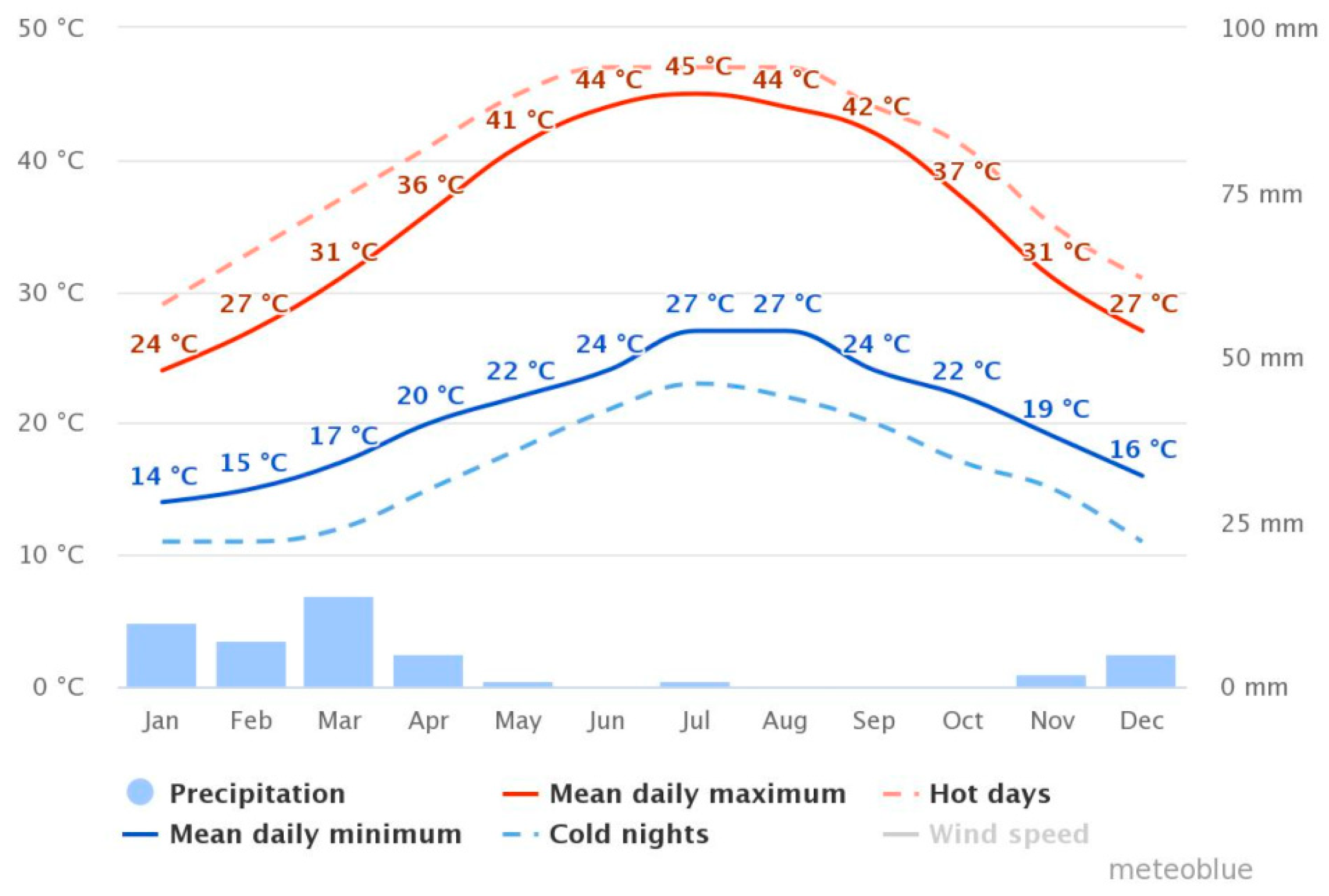

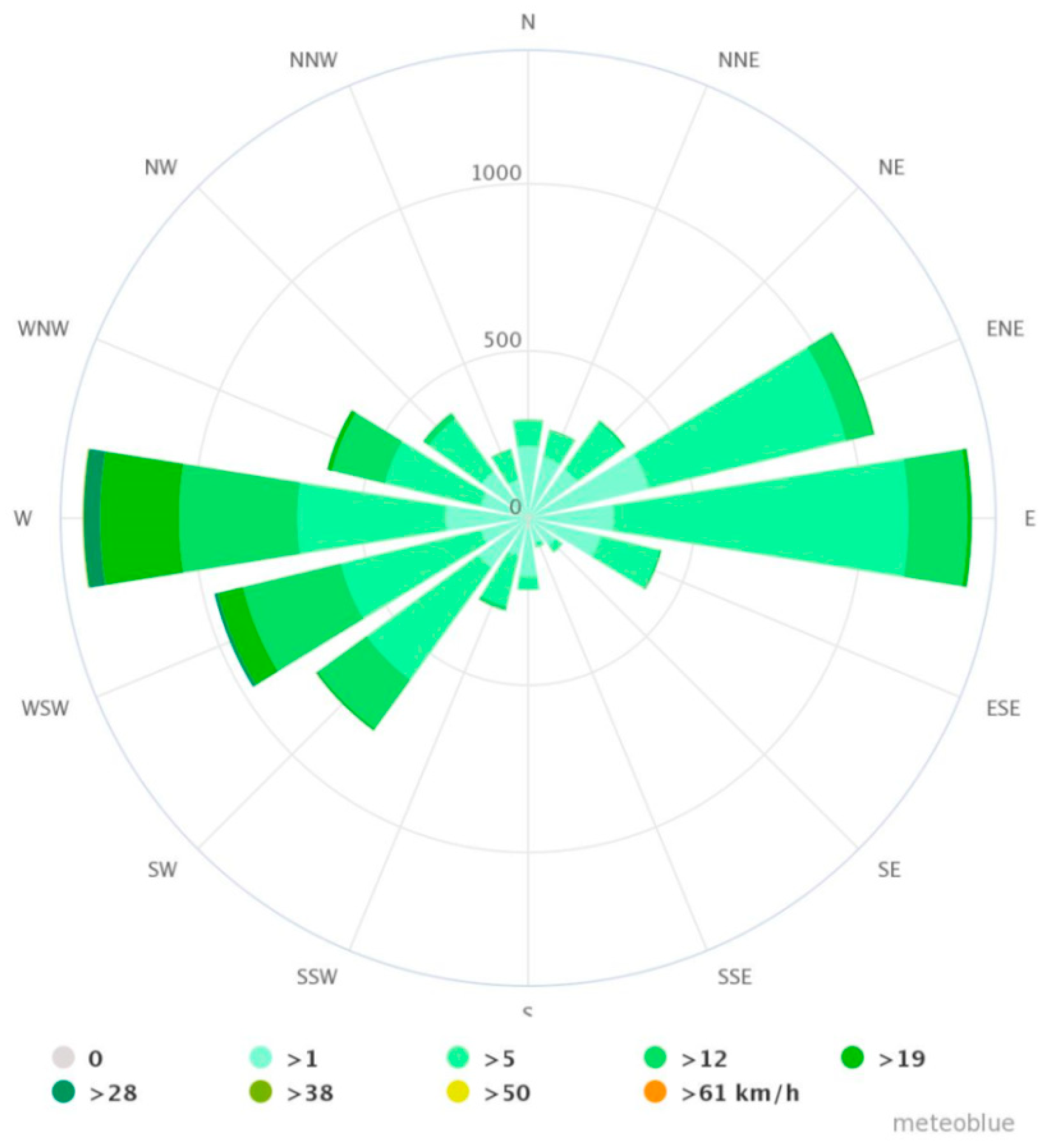
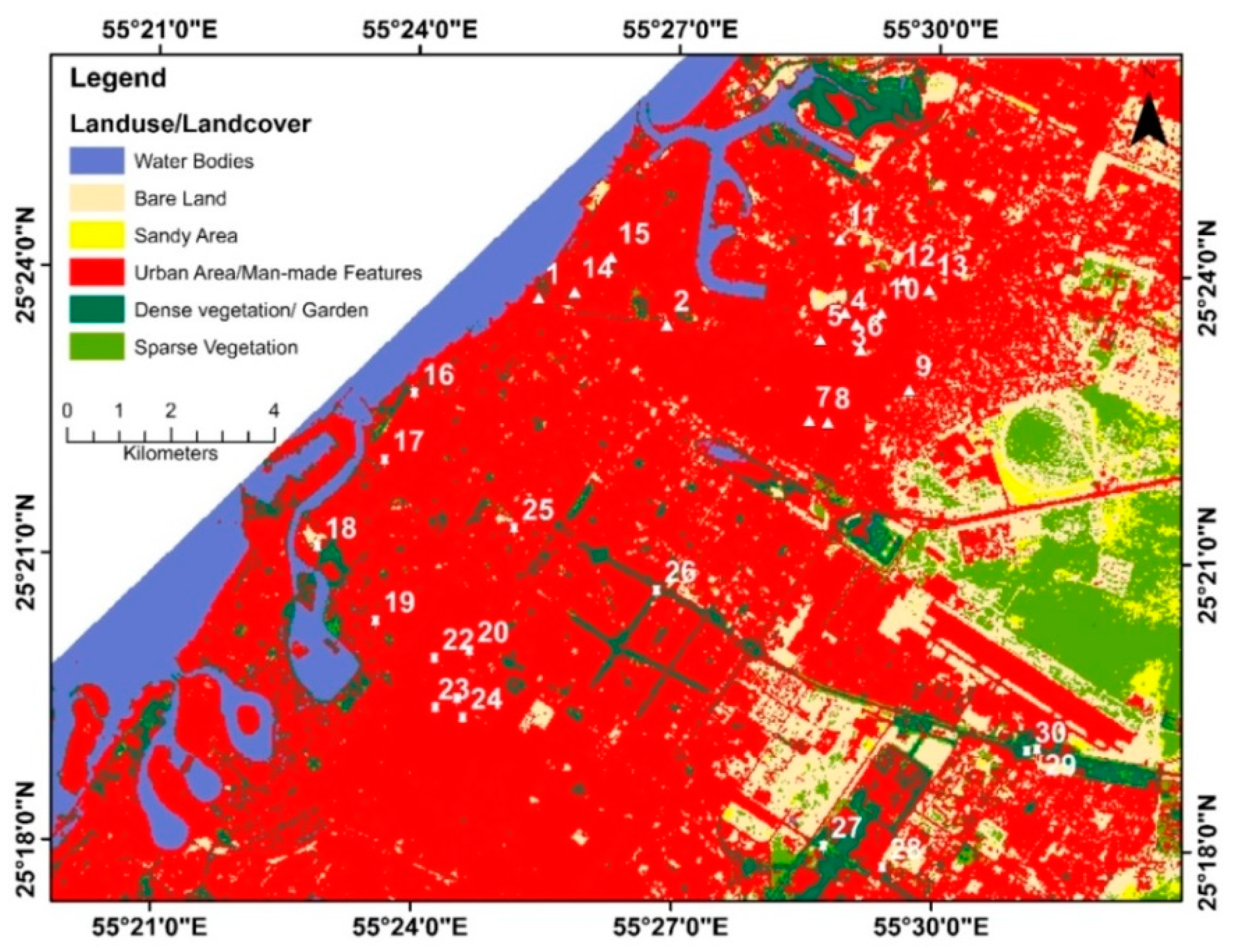
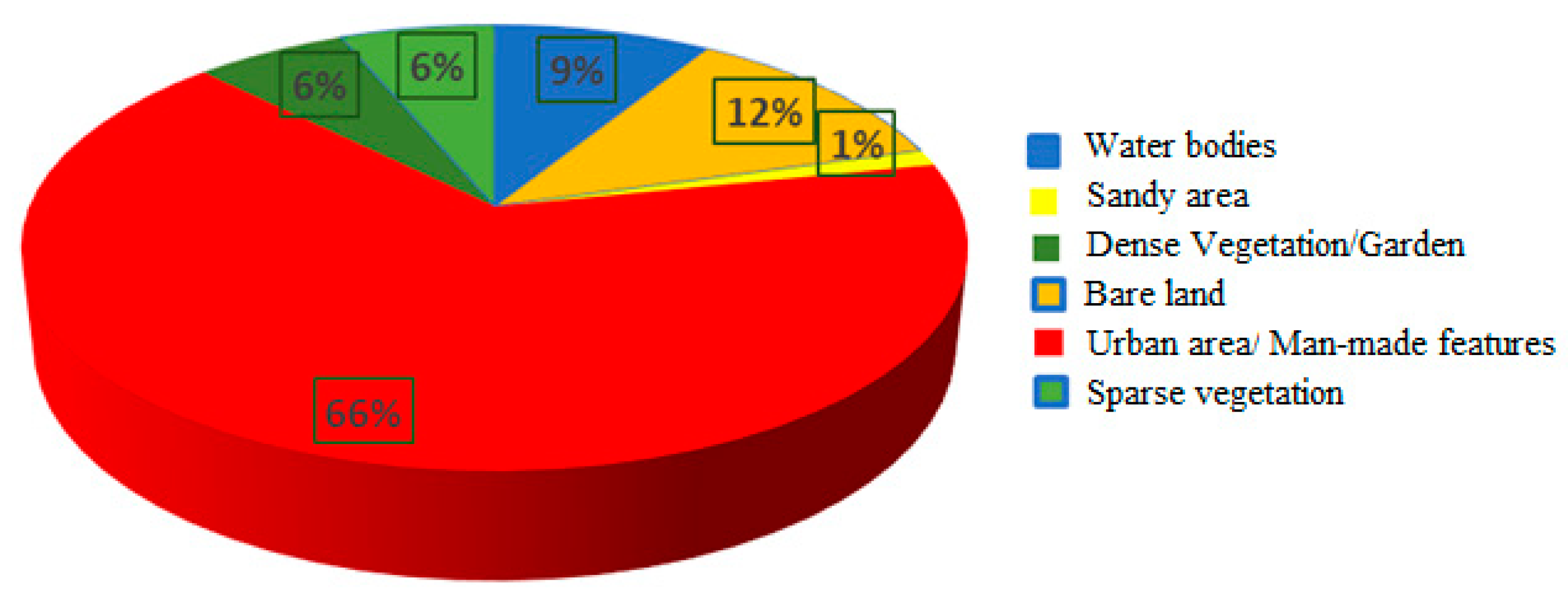

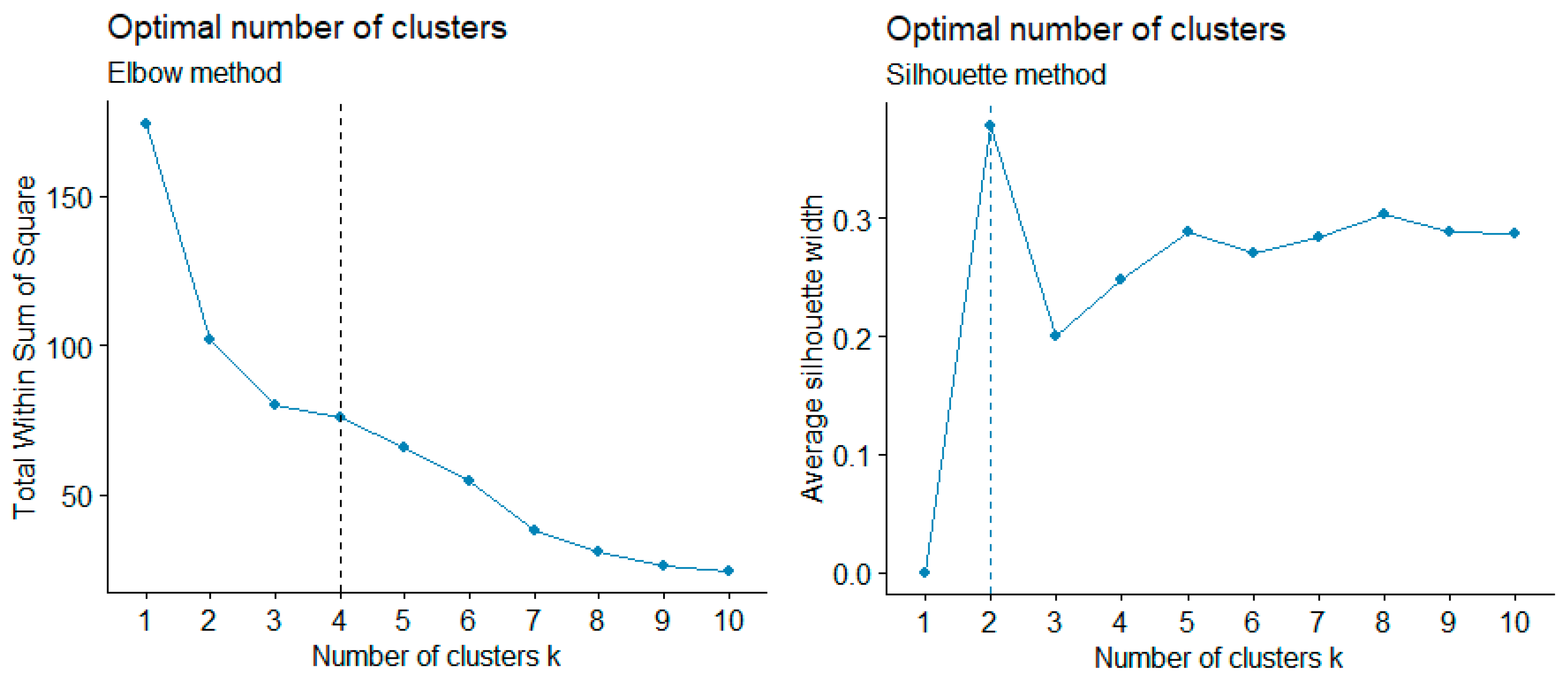
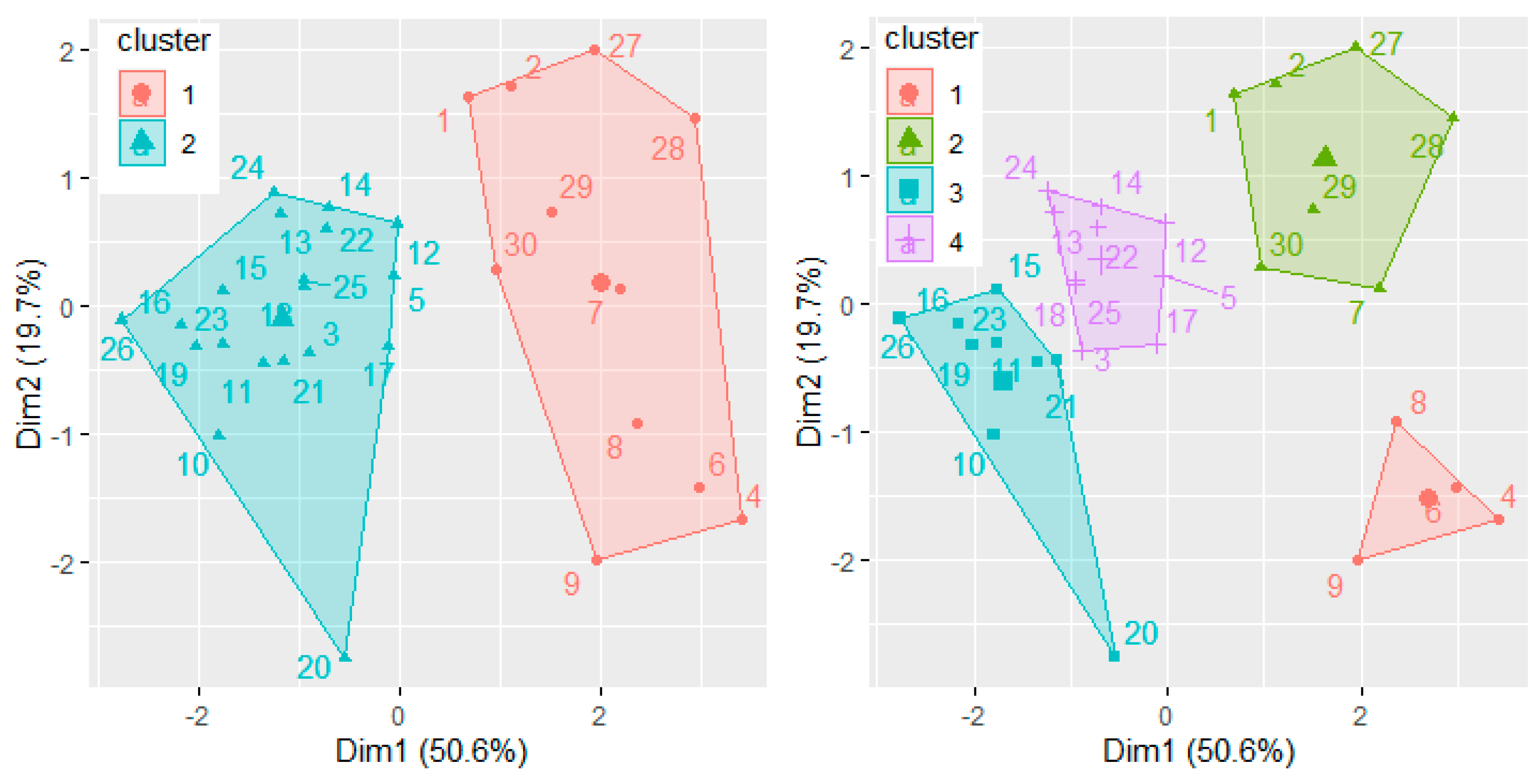
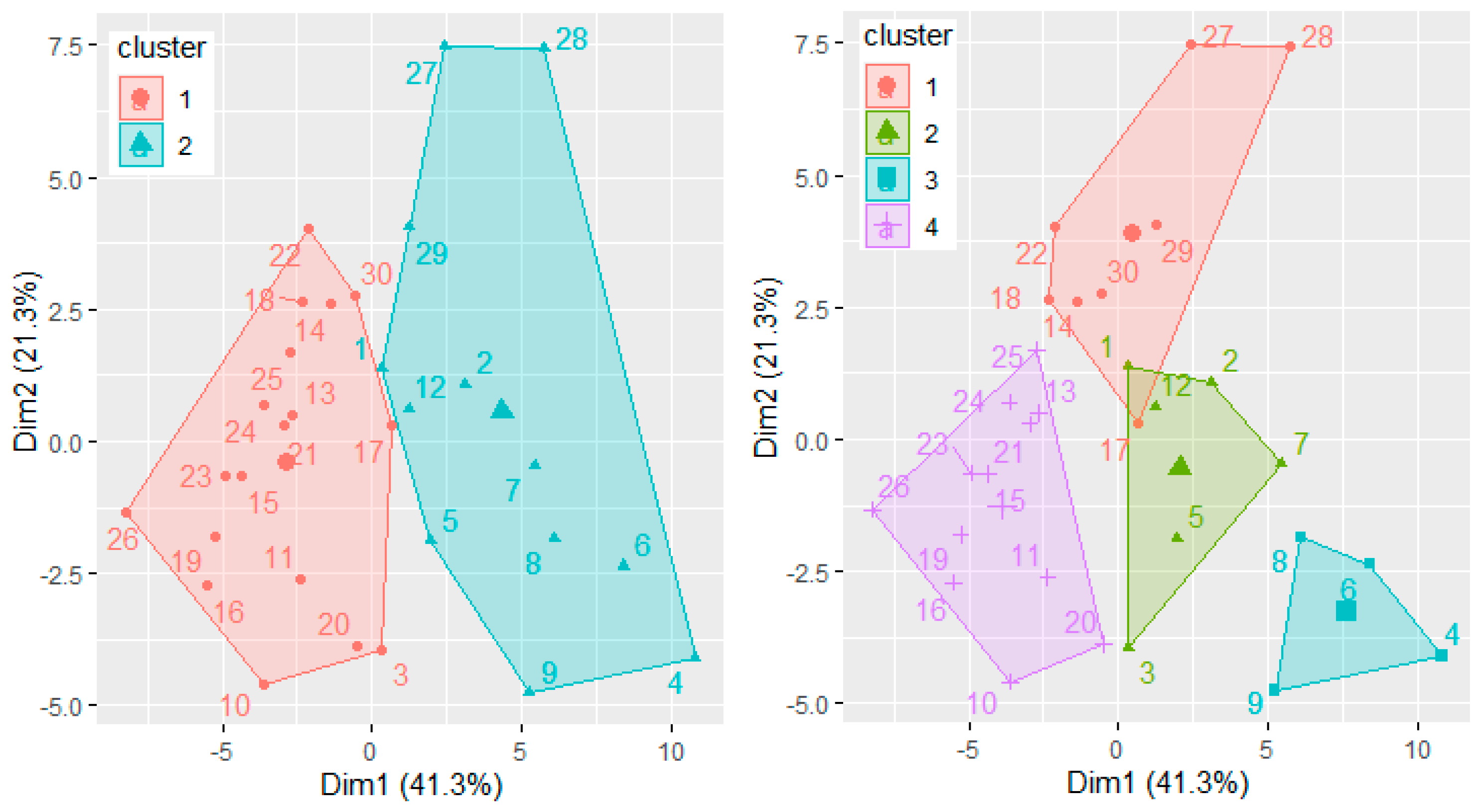
| Factor | Definition | Unit | Value | Reference |
|---|---|---|---|---|
| c | Concentration of the contaminant in dusts | mg/kg | - | This study |
| Ring | Ingestion rate of soil | mg/day | 100 | [49] |
| AT | Average time | days | 365 × ED | |
| BW | Average body weight | kg | 55.9 | Environmental site [50] |
| CF | Conversion factor | kg/mg | 1 × 10−6 | |
| EF | Exposure frequency | days/year | 35 | |
| ED | Exposure duration | year | 24 | [50] |
| SA | Surface area of the skin that contacts the dust | cm2 | 5000 | [50] |
| Rinh | Inhalation rate | m3/day | 20 | |
| SL | Skin adherence factor for dust | mg/cm2 | 1 | |
| ABS | Dermal absorption factor (chemical specific) | - | 0.001 | |
| PEF | Particle emission factor | m3/kg | 1.32 × 109 |
| Metal | Ingestion | Dermal | Inhalation |
|---|---|---|---|
| Cd | 0.0010 | 0.00005 | 0.0030 |
| Pb | 0.0035 | 0.00053 | 0.0035 |
| Cr | 0.0050 | 0.00025 | 0.000029 |
| Cu | 0.0370 | 0.0011 | 0.0400 |
| Ni | 0.0200 | 0.0010 | 0.0210 |
| Zn | 0.300 | 0.0600 | 0.3200 |
| Site no | Location | Latitude | Longitude | Pb (ppm) | Copper (ppm) | Zn (ppm) | Ni (ppm) | Cr (ppm) | Cd (ppm) |
|---|---|---|---|---|---|---|---|---|---|
| 1 | Sheraton hotel tourist area | 25°23′43″ | 55°25′24″ | 6.06 | 34.84 | 89.80 | 142.34 | 61.49 | 0.02 |
| 2 | Alnuaimiay tourist area | 25°23′27″ | 55°26′53″ | 11.57 | 67.41 | 115.11 | 173.49 | 89.45 | 0.02 |
| 3 | Ajman industrial areas and petrol stations | 25°23′36″ | 55°28′56″ | 15.19 | 66.76 | 190.50 | 167.21 | 82.39 | 0.01 |
| 4 | 25°23′29″ | 55°29′04″ | 34.28 | 65.71 | 470.49 | 165.65 | 80.78 | 0.02 | |
| 5 | 25°23′19″ | 55°28′39″ | 16.22 | 61.75 | 132.38 | 156.81 | 66.81 | 0.01 | |
| 6 | 25°23′13″ | 55°29′07″ | 37.77 | 57.37 | 377.30 | 148.97 | 64.71 | 0.02 | |
| 7 | 25°22′28″ | 55°28′32″ | 32.31 | 53.58 | 150.32 | 146.17 | 63.54 | 0.02 | |
| 8 | 25°22′27″ | 55°28′45″ | 44.84 | 47.67 | 185.83 | 136.30 | 61.97 | 0.02 | |
| 9 | 25°22′48″ | 55°29′41″ | 40.21 | 42.14 | 316.49 | 134.68 | 61.71 | 0.02 | |
| 10 | 25°23′36″ | 55°29′21″ | 21.45 | 41.64 | 115.19 | 134.66 | 58.90 | 0.01 | |
| 11 | Ajman residential and commercial area | 25°24′22″ | 55°28′52″ | 13.99 | 40.33 | 170.67 | 134.37 | 58.47 | 0.01 |
| 12 | 25°23′57″ | 55°29′37″ | 14.92 | 40.24 | 133.33 | 129.59 | 55.35 | 0.01 | |
| 13 | Adnoc Ajman | 25°23′51″ | 55°29′54″ | 9.49 | 39.92 | 83.48 | 115.79 | 49.99 | 0.01 |
| 14 | Ajman commercial area | 25°23′47″ | 55°25′49″ | 16.47 | 37.53 | 101.15 | 114.93 | 49.84 | 0.01 |
| 15 | 25°24′09″ | 55°26′14″ | 11.06 | 35.41 | 106.18 | 108.56 | 49.67 | 0.01 | |
| 16 | Sharjah residential and commercial areas | 25°22′41″ | 55°23′59″ | 4.54 | 35.16 | 121.45 | 98.72 | 47.61 | 0.01 |
| 17 | 25°21′59″ | 55°23′39″ | 18.49 | 32.99 | 229.41 | 97.02 | 45.50 | 0.01 | |
| 18 | Sharjah-bus station | 25°21′4″ | 55°22′53″ | 20.46 | 31.11 | 152.75 | 96.55 | 44.94 | 0.01 |
| 19 | Sharjah commerial area | 25°20′18″ | 55°23′34″ | 11.06 | 29.22 | 124.60 | 93.76 | 44.85 | 0.01 |
| 20 | Sharjah industrial area | 25°19′06″ | 55°24′39″ | 52.74 | 28.73 | 192.01 | 90.92 | 41.25 | 0.01 |
| 21 | 25°19′30″ | 55°24′31″ | 24.01 | 27.90 | 127.34 | 89.87 | 39.87 | 0.01 | |
| 22 | 25°19′55″ | 55°24′15″ | 20.59 | 27.32 | 105.58 | 84.01 | 38.11 | 0.01 | |
| 23 | 25°19′24″ | 55°24′16″ | 15.89 | 25.26 | 106.31 | 83.19 | 37.69 | 0.01 | |
| 24 | 25°19′18″ | 55°24′35″ | 4.08 | 25.25 | 55.95 | 79.86 | 35.29 | 0.01 | |
| 25 | Sharjah airport highway | 25°21′17″ | 55°25′9″ | 16.15 | 24.53 | 126.11 | 79.42 | 34.81 | 0.01 |
| 26 | 25°20′39″ | 55°26′48″ | 7.05 | 20.69 | 66.94 | 78.66 | 34.19 | 0.01 | |
| 27 | Sharjah University | 25°18′0″ | 55°28′45″ | 18.11 | 20.44 | 106.82 | 70.03 | 34.11 | 0.02 |
| 28 | 25°17′47″ | 55°29′26″ | 16.96 | 17.92 | 275.41 | 69.88 | 33.80 | 0.02 | |
| 29 | Sharjah airport | 25°19′2″ | 55°31′12″ | 22.29 | 16.43 | 151.21 | 62.22 | 30.02 | 0.02 |
| 30 | 25°19′1″ | 55°31′5″ | 24.92 | 15.13 | 129.01 | 61.76 | 26.42 | 0.02 |
| Metal | Heavy Metals Concentrations in Samples (mg/kg) | Background Values of the World (mg/Kg) | |||
|---|---|---|---|---|---|
| Mean | Min | Max | Std. Dev. | ||
| Cd | 0.013 | 0.005 | 0.018 | 0.003 | 0.35 |
| Pb | 20.105 | 4.075 | 52.737 | 12.000 | 35 |
| Cr | 50.783 | 26.416 | 89.445 | 16.100 | 70 |
| Cu | 37.011 | 15.125 | 67.411 | 15.200 | 30 |
| Ni | 111.513 | 61.762 | 173.486 | 35.600 | 50 |
| Zn | 160.304 | 55.953 | 470.493 | 92.100 | 90 |
| Metal | Cd | Pb | Cr | Cu | Ni | Zn | |
|---|---|---|---|---|---|---|---|
| ADDing | Mean | 1.84 × 10−8 | 2.75 × 10−5 | 6.96 × 10−5 | 5.07 × 10−5 | 1.53 × 10−4 | 2.20 × 10−4 |
| Min. | 6.85 × 10−9 | 5.58 × 10−6 | 3.62 × 10−5 | 2.07 × 10−5 | 8.46 × 10−5 | 7.66 × 10−5 | |
| Max. | 2.47 × 10−8 | 7.22 × 10−5 | 1.23 × 10−4 | 9.23 × 10−5 | 2.38 × 10−4 | 6.45 × 10−4 | |
| ADDderm | Mean | 4.47 × 10−11 | 6.70 × 10−8 | 1.69 × 10−7 | 1.23 × 10−7 | 3.72 × 10−7 | 5.34 × 10−7 |
| Min. | 1.67 × 10−11 | 1.36 × 10−8 | 8.81 × 10−8 | 5.04 × 10−8 | 2.06 × 10−7 | 1.87 × 10−7 | |
| Max. | 6.00 × 10−11 | 1.76 × 10−7 | 2.98 × 10−7 | 2.25 × 10−7 | 5.78 × 10−7 | 1.57 × 10−6 | |
| ADDinh | Mean | 2.78 × 10−12 | 4.17 × 10−9 | 1.05 × 10−8 | 7.68 × 10−9 | 2.31 × 10−8 | 3.33 × 10−8 |
| Min | 1.04 × 10−12 | 8.46 × 10−10 | 5.48 × 10−9 | 3.14 × 10−9 | 1.28 × 10−8 | 1.16 × 10−8 | |
| Max. | 3.74 × 10−12 | 1.09 × 10−8 | 1.86 × 10−8 | 1.40 × 10−8 | 3.60 × 10−8 | 9.77 × 10−8 | |
| Total ADD | Mean | 1.84 × 10−8 | 2.76 × 10−5 | 6.97 × 10−5 | 5.08 × 10−5 | 1.53 × 10−4 | 2.20 × 10−4 |
| Min. | 6.87 × 10−8 | 5.60 × 10−6 | 3.63 × 10−5 | 2.08 × 10−5 | 8.48 × 10−5 | 7.68 × 10−5 | |
| Max. | 2.47 × 10−8 | 7.24 × 10−5 | 1.23 × 10−4 | 9.26 × 10−5 | 2.38 × 10−4 | 6.46 × 10−4 |
| Metal | Cd | Pb | Cr | Cu | Ni | Zn | |
|---|---|---|---|---|---|---|---|
| HQing | Mean | 1.84 × 10−5 | 7.87 × 10−3 | 1.39 × 10−2 | 1.37 × 10−3 | 7.64 × 10−3 | 7.32 × 10−4 |
| Min | 6.85 × 10−6 | 1.60 × 10−3 | 7.24 × 10−3 | 5.60 × 10−4 | 4.23 × 10−3 | 2.55 × 10−4 | |
| Max | 2.47 × 10−5 | 2.06 × 10−2 | 2.45 × 10−2 | 2.50 × 10−3 | 1.19 × 10−2 | 2.15 × 10−3 | |
| HQderm | Mean | 8.94 × 10−7 | 1.28 × 10−4 | 6.77 × 10−4 | 1.13 × 10−4 | 3.72 × 10−4 | 8.91 × 10−6 |
| Min | 3.33 × 10−7 | 2.59 × 10−5 | 3.52 × 10−4 | 4.63 × 10−5 | 2.06 × 10−4 | 3.11 × 10−6 | |
| Max | 1.20 × 10−6 | 3.35 × 10−4 | 1.19 × 10−3 | 2.06 × 10−4 | 5.78 × 10−4 | 2.61 × 10−5 | |
| HQinh | Mean | 2.78 × 10−9 | 1.19 × 10−6 | 3.69 × 10−4 | 1.91 × 10−7 | 1.12 × 10−6 | 1.04 × 10−7 |
| Min | 1.04 × 10−9 | 2.40 × 10−7 | 1.92 × 10−4 | 7.81 × 10−8 | 6.22 × 10−7 | 3.63 × 10−8 | |
| Max | 3.74 × 10−9 | 3.11 × 10−6 | 6.49 × 10−4 | 3.48 × 10−7 | 1.75 × 10−6 | 3.05 × 10−7 | |
| Total HQ | Mean | 1.93 × 10−5 | 8.00 × 10−3 | 1.50 × 10−2 | 1.48 × 10−3 | 8.01 × 10−3 | 7.41 × 10−4 |
| Min | 7.18 × 10−6 | 1.62 × 10−3 | 7.78 × 10−3 | 6.06 × 10−4 | 4.44 × 10−3 | 2.59 × 10−4 | |
| Max | 2.59 × 10−5 | 2.10 × 10−2 | 2.63 × 10−2 | 2.70 × 10−3 | 1.25 × 10−2 | 2.18 × 10−3 |
Publisher’s Note: MDPI stays neutral with regard to jurisdictional claims in published maps and institutional affiliations. |
© 2021 by the authors. Licensee MDPI, Basel, Switzerland. This article is an open access article distributed under the terms and conditions of the Creative Commons Attribution (CC BY) license (https://creativecommons.org/licenses/by/4.0/).
Share and Cite
Nazzal, Y.; Orm, N.B.; Barbulescu, A.; Howari, F.; Sharma, M.; Badawi, A.E.; A. Al-Taani, A.; Iqbal, J.; Ktaibi, F.E.; Xavier, C.M.; et al. Study of Atmospheric Pollution and Health Risk Assessment: A Case Study for the Sharjah and Ajman Emirates (UAE). Atmosphere 2021, 12, 1442. https://doi.org/10.3390/atmos12111442
Nazzal Y, Orm NB, Barbulescu A, Howari F, Sharma M, Badawi AE, A. Al-Taani A, Iqbal J, Ktaibi FE, Xavier CM, et al. Study of Atmospheric Pollution and Health Risk Assessment: A Case Study for the Sharjah and Ajman Emirates (UAE). Atmosphere. 2021; 12(11):1442. https://doi.org/10.3390/atmos12111442
Chicago/Turabian StyleNazzal, Yousef, Nadine Bou Orm, Alina Barbulescu, Fares Howari, Manish Sharma, Alaa E. Badawi, Ahmed A. Al-Taani, Jibran Iqbal, Farid El Ktaibi, Cijo M. Xavier, and et al. 2021. "Study of Atmospheric Pollution and Health Risk Assessment: A Case Study for the Sharjah and Ajman Emirates (UAE)" Atmosphere 12, no. 11: 1442. https://doi.org/10.3390/atmos12111442







